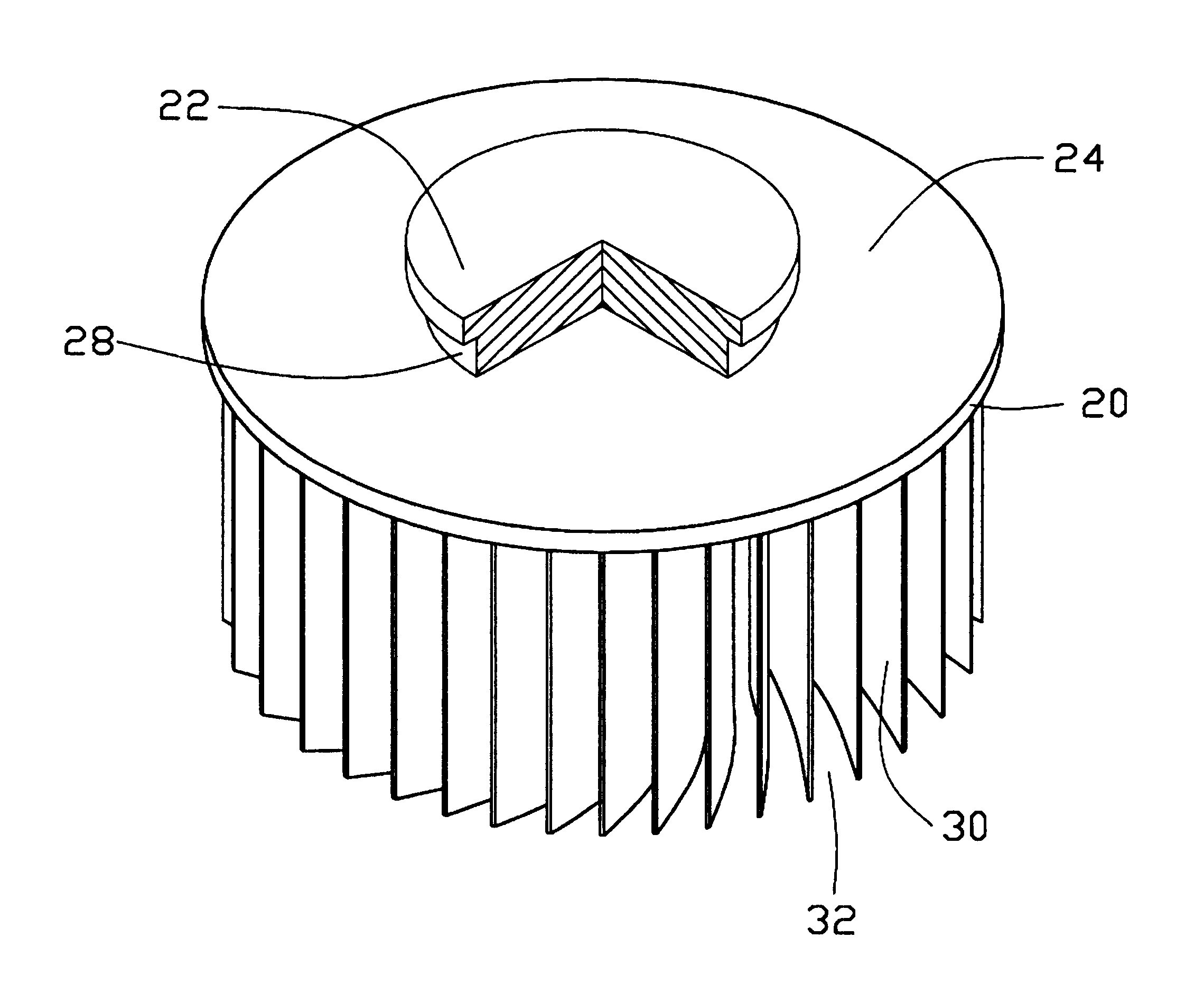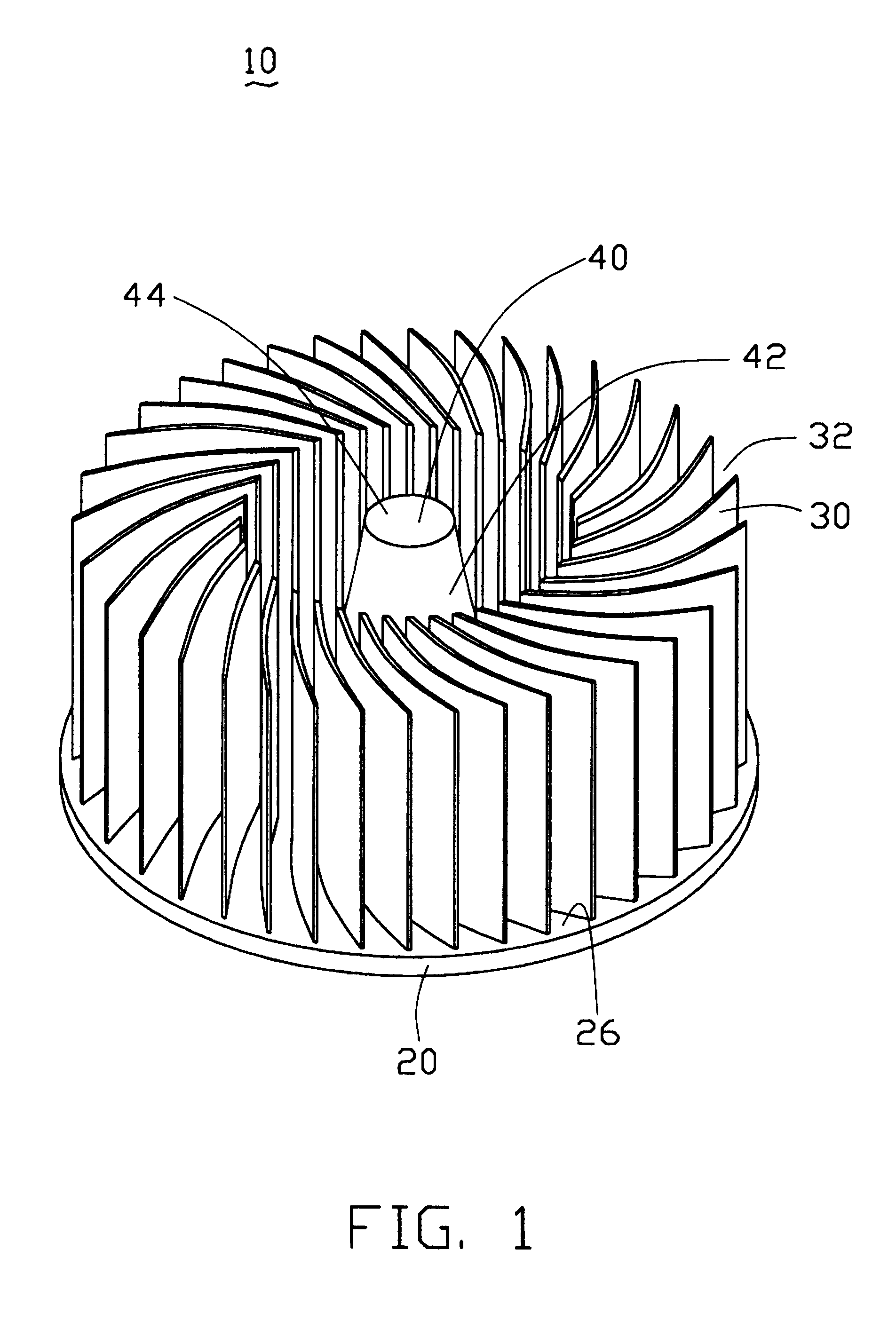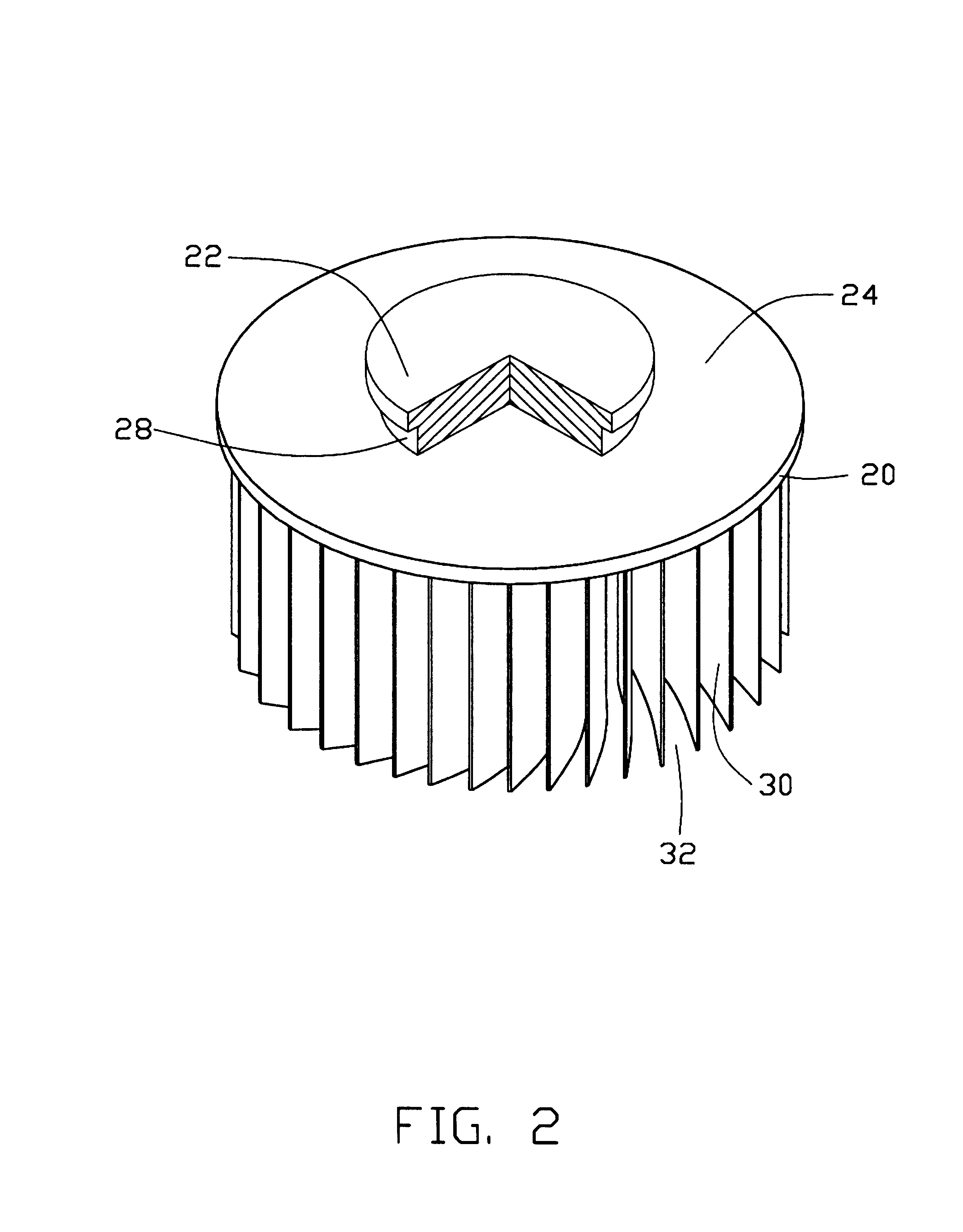Turbinate heat sink
a heat sink and turbinate technology, applied in the field of heat sinks, can solve the problems of deteriorating the stability and operation of the cpu, obstructing airflow, radial fins, etc., and achieve the effect of enhancing heat convection and minimizing resistance to incoming forced
- Summary
- Abstract
- Description
- Claims
- Application Information
AI Technical Summary
Benefits of technology
Problems solved by technology
Method used
Image
Examples
Embodiment Construction
FIG. 1 shows a heat sink 10 in accordance with a preferred embodiment of the present invention, for removing heat from an electronic device such as a central processing unit (CPU) (not shown). The heat sink 10 is formed as a single unit. The heat sink 10 comprises a circular base 20, a plurality of fins 30, and a central post 40.
The post 40 extends upwardly from a top surface 26 of the base 20, and is coaxial with the base 20. The post 40 includes a first surface (not labeled), a second surface 44 and a concave side surface 42. The first and second surfaces are substantially round. The first surface is connected to the top surface 26 of the base 20. The second surface 44 is smaller than the first surface, dimensioned according to a rotary heat sink fan (not shown) to be attached thereon. The concave side surface 42 is connected between the first and second surfaces for minimizing resistance to incoming airflow and directing airflow toward an exterior of the heat sink 10.
The fins 30 ...
PUM
 Login to View More
Login to View More Abstract
Description
Claims
Application Information
 Login to View More
Login to View More - R&D
- Intellectual Property
- Life Sciences
- Materials
- Tech Scout
- Unparalleled Data Quality
- Higher Quality Content
- 60% Fewer Hallucinations
Browse by: Latest US Patents, China's latest patents, Technical Efficacy Thesaurus, Application Domain, Technology Topic, Popular Technical Reports.
© 2025 PatSnap. All rights reserved.Legal|Privacy policy|Modern Slavery Act Transparency Statement|Sitemap|About US| Contact US: help@patsnap.com



